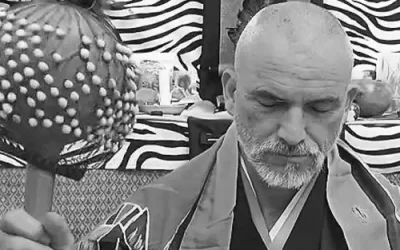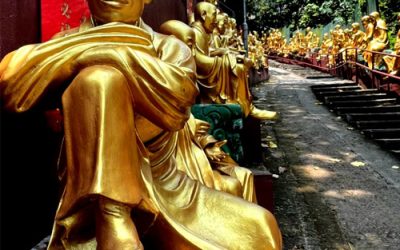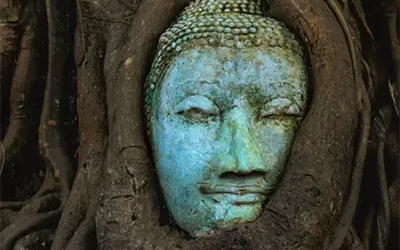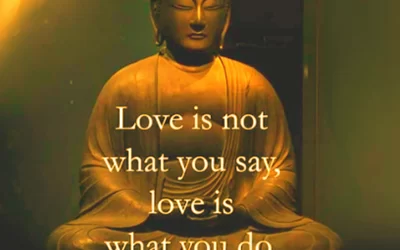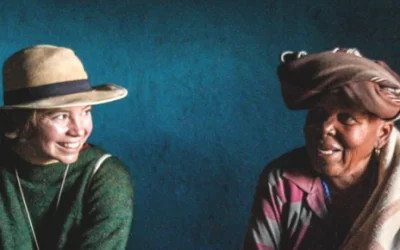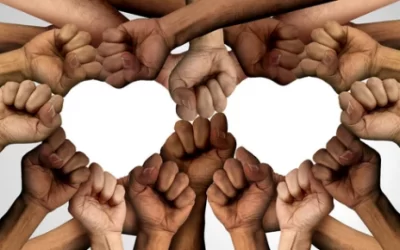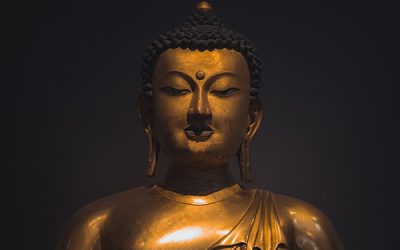BEZA Blogs
Let’s explore the teachings and practices of Zen Buddhism alongside Nature’s wisdom.
A Moment of Celebration! BEZA is officially a Non-Profit Company!
Born as the Earth Zen Academy has been in gestation for the past two years. Supported by the heart of the BEZA Sangha we have been in a precious time of growth as we anchor our roots and deepen into creation with solid foundations. Now, like a stem of a young tree...
Mountains, Rivers, and the Song of Zen: A Journey Beyond Perception
An ancient master once said:
Thirty years ago, before studying Zen, I saw mountains as mountains and rivers as rivers.
When I had more intimate knowledge, I came to see mountains not as mountains and rivers not as rivers.
But now that I have attained the substance, I again see mountains just as mountains, and rivers just as rivers.
“There are mountains hidden in hiddenness…”
Dear Beautiful Creative Being,
Starting on the 5th October, a cohort of deeply curious and dedicated BEZA students and apprentices will embark on an 8 week deep dive into the creative power of stones.
THE CREATIVE POWER OF STONES!? Yes, you read that right!
“When we connect with our bones, the stones of our bodies, we connect with the powerful medicine of the mountains.”
BEZA turns Two!
The Road Less Travelled: Making a difference.Dear BEZA friends, It was two years ago on the 2nd of September 2022 when BEZA welcomed our first 3 Apprentices for our opening training aptly named the Visionary Fire Module. Working with the energy of a new moon, the...
Spontaneous Reality
"A child not born in love has many faces,” was what JustAsk - a powerful indigenous shaman - said on the mountain at the outskirts of the small West African village. In that moment I saw the many faces I had learned to mask myself with since childhood. The faces I...
Love is what you do!
Embodied Enlightenment ~ Love in practice ~ From a Buddhist perspective and from the Buddha himself, you are perfect and complete and lacking nothing! At the moment of the Buddha’s enlightenment he realised that he had always been enlightened - that it was the...
Healing the Masculine and Feminine
Healing the Masculine and Feminine To heal the pain in any existing divide between the masculine and feminine, and give practical expression to this Heart-Mind Way, Nangaku from BEZA and Svenja Krauer – an Alchemist of Change, invite you to a monthly online community...
Gold Beyond the Edge
Dear Earth Beings, Here is something for you to investigate in this moment, or perhaps for the rest of your life… My spiritual Grandfather, Baba Credo Mutwa - High Sanusi, Sangoma and Spiritual Elder of the Zulu people was the great record keeper of the ancient...
Coalition of Sovereign Love
Coalition of Sovereign Love From my Heart to yours, 2024 is the first year in recorded history when more than 50% of the world’s population (some 4 billion of us) have the opportunity to choose which power structures best represent our will. Regardless of actual...
The Transformative Power of Talismanic Art
“Becoming aware that the art I had been instinctively creating using sticks, stones, feathers and bones, is my unique medicine gift to the world, I completed my first “conscious” Talismanic Art Piece. I based it on my journey with Born as the Earth School so far.” – Alison Evans
Artificial Intelligence vs Authentic Intelligence: A Zen Buddhist Perspective on Consciousness
“Everything we are talking about AI or computing power will never be able to beat the complexity that nature presents to us. The real intelligence is Nature’s Intelligence. AI is good, but AI is just a tool to Nature’s Intelligence. Nature’s Intelligence is four and half billion years old. To think that something that is less than a hundred years old can beat something that is four billion years is a bit of an extension.” – Agam Khare
Forest Bathing, Shinrin Yoku: What is it, and How to Practice it.
In a world that is constantly on the move, where stress and anxiety seem to be an integral part of our daily lives, there’s a Japanese practice that offers a refreshing escape into nature’s embrace. Its called Shinrin Yoku, or forest bathing, and it’s a profound way to reconnect with the natural world while reaping numerous health benefits. In this article, we’ll delve into the essence of Shinrin Yoku, explore what it means, and learn how to practice this ancient Japanese art.
The Effects of Inauthentic Expression & Deception on the Body
Often the social environment is partly to blame for deceptive activity. In holistic communities the perpetrator, victim, and witnessing community all share collective responsibility for maintaining honesty and equity in all relationships. Therefore, we each have a vital role to play in reducing inauthenticity in our friend, family, work, and social circles. Firstly, role-modelling authenticity, vulnerability and truthful expression allows others to trust their own capacity to do the same. This a powerful first step in creating an environment that supports authentic expression.
Exploring Healing Wisdom: 5 Medicine Buddhas and Their Influence on Buddhist Practice, Belief, and Schools
Buddhism, with its rich tapestry of teachings and traditions, encompasses a wide array of beliefs and practices. One intriguing facet of this spiritual journey revolves around the concept of the “Medicine Buddhas.” In this article, we delve into the world of these celestial beings, their significance in Buddhist practice, the beliefs surrounding them, and the various schools that venerate them.
The Body’s Center: How the Hara, or Center of Gravity Functions in All Body Practices
In the realm of body practices, there exists a fundamental concept that serves as the anchor for balance, strength, and movement coordination. This concept is none other than the “Hara,” often referred to as the core or center of gravity. Whether you’re practicing yoga, martial arts, dance, or any physical discipline, understanding the significance of the hara is crucial for unlocking your body’s full potential and achieving optimal performance. In this article, we’ll delve into the intricacies of the hara, exploring its functions and importance across various body practices.



